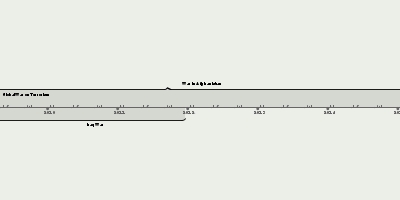Operation Barbarossa (22 jun 1941 año – 5 dic 1941 año)
Descripción:
Operation Barbarossa was the invasion of the Soviet Union by Nazi Germany and several of its European Axis allies starting on Sunday, June 22nd, 1941, during World War II. More than 3.8 million Axis troops invaded the western Soviet Union along a 2,900-kilometer (1,800 mi) front, with the main goal of capturing territory up to a line between Arkhangelsk and Astrakhan, known as the A–A line. The attack became the largest and costliest military offensive in human history, with around 10 million combatants taking part in the opening phase and over 8 million casualties by the end of the operation on December 5th, 1941. It marked a major escalation of World War II, opened the Eastern Front—the largest and deadliest land war in history—and brought the Soviet Union into the Allied powers.The operation, code-named after the Holy Roman Emperor Frederick Barbarossa ("red beard"), put into action Nazi Germany's ideological goals of eradicating communism and conquering the western Soviet Union to repopulate it with Germans under Generalplan Ost, which planned for the removal of the native Slavic peoples by mass deportation to Siberia, Germanisation, enslavement, and genocide. The material targets of the invasion were the agricultural and mineral resources of territories such as Ukraine and Byelorussia and oil fields in the Caucasus. The Axis eventually captured five million Soviet Red Army troops on the Eastern Front and deliberately starved to death or otherwise killed 3.3 million prisoners of war, as well as millions of civilians. Mass shootings and gassing operations, carried out by German paramilitary death squads and collaborators, murdered over a million Soviet Jews as part of the Holocaust. In the two years leading up to the invasion, Nazi Germany and the Soviet Union signed political and economic pacts for strategic purposes. Following the Soviet occupation of Bessarabia and Northern Bukovina in July 1940, the German High Command began planning an invasion of the country, which was approved by Adolf Hitler in December. In early 1941, Soviet leader Joseph Stalin, despite receiving intelligence about an imminent attack, did not order a mobilization of the Red Army, fearing that it might provoke Germany. As a result, Soviet forces were largely caught unprepared when the invasion began, with many units positioned poorly and understrength.
The invasion began on June 22nd, 1941 with a massive ground and air assault. The main part of Army Group South invaded from occupied Poland on June 22nd, and on July 2nd was joined by a combination of German and Romanian forces attacking from Romania. Kiev was captured on September 19th, which was followed by the captures of Kharkov on October 24th and Rostov-on-Don on November 20th, by which time most of Crimea had been captured and Sevastopol put under siege. Army Group North overran the Baltic lands, and on September 8th, 1941 began a siege of Leningrad with Finnish forces that ultimately lasted until 1944. Army Group Centre, the strongest of the three groups, captured Smolensk in late July 1941 before beginning a drive on Moscow on October 2nd. Facing logistical problems with supply, slowed by muddy terrain, not fully outfitted for Russia's brutal winter, and coping with determined Soviet resistance, Army Group Centre's offensive stalled at the city's outskirts by December 5th, at which point the Soviets began a major counteroffensive.
The failure of Operation Barbarossa reversed the fortunes of Nazi Germany. Operationally, it achieved significant victories and occupied some of the most important economic regions of the Soviet Union, captured millions of prisoners, and inflicted heavy casualties. The German high command anticipated a quick collapse of resistance as in the invasion of Poland, but instead the Red Army absorbed the German Wehrmacht's strongest blows and bogged it down in a war of attrition for which Germany was unprepared. Following the heavy losses and logistical strain of Barbarossa, German forces could no longer attack along the entire front, and their subsequent operations—such as Case Blue in 1942 and Operation Citadel in 1943—ultimately failed.
Añadido al timeline:
fecha:
22 jun 1941 año
5 dic 1941 año
~ 5 months and 16 days
